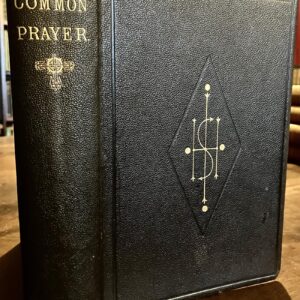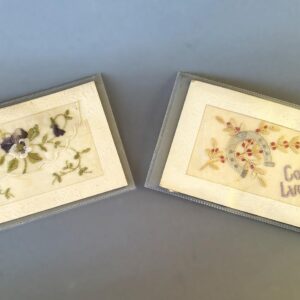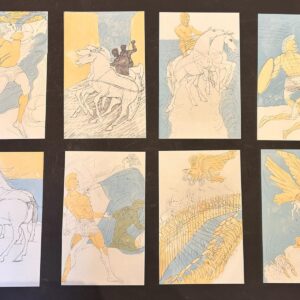A Fine British Old Master Work Of Art Antique 17th Century Oil Painting Portrait King Charles 1st After Van Dyke. Half length front profile view portrait which depicts Englands famous Royal Charles 1st. Wearing his armour he is looking towards the viewer projecting confidence and high status authority power in his pose at the peak of his powers. Presented in a later decorative composite gilt frame which complements the painting a fabulous statement piece interior wall hanging decoration. A practical display size being 49.5cm height of the frame. Oil on canvas. Unsigned.Circle of Henry Stone after Van Dyke, Verso there is an old label inscribed Old Stone Hanging thread on the back ready for home display. Circa late 17th century. So collectable and highly sought after. King Charles 1st (19 November 1600 – 30 January 1649) was King of England, Scotland, and Ireland from 27 March 1625 until his execution in 1649. He was born into the House of Stuart as the second son of King James Vi of Scotland, but after his father inherited the English throne in 1603, he moved to England, where he spent much of the rest of his life. He became heir apparent to the kingdoms of England, Scotland, and Ireland in 1612 upon the death of his elder brother, Henry Frederick, Prince of Wales. An unsuccessful and unpopular attempt to marry him to the Spanish Habsburg princess Maria Anna culminated in an eight-month visit to Spain in 1623 that demonstrated the futility of the marriage negotiation. Two years later, he married the Bourbon princess Henrietta Maria of France. After his 1625 succession, Charles quarrelled with the English Parliament, which sought to curb his royal prerogative. He believed in the divine right of kings, and was determined to govern according to his own conscience. Many of his subjects opposed his policies, in particular the levying of taxes without parliamentary consent, and perceived his actions as those of a tyrannical absolute monarch. His religious policies, coupled with his marriage to a Roman Catholic, generated antipathy and mistrust from Reformed religious groups such as the English Puritans and Scottish Covenanters, who thought his views too Catholic. He supported high church Anglican ecclesiastics and failed to aid continental Protestant forces successfully during the Thirty Years War. His attempts to force the Church of Scotland to adopt high Anglican practices led to the Bishops Wars, strengthened the position of the English and Scottish parliaments, and helped precipitate his own downfall. From 1642, Charles fought the armies of the English and Scottish parliaments in the English Civil War. After his defeat in 1645 at the hands of the Parliamentarian New Model Army, he fled north from his base at Oxford. Charles surrendered to a Scottish force and after lengthy negotiations between the English and Scottish parliaments he was handed over to the Long Parliament in London. Charles refused to accept his captors demands for a constitutional monarchy, and temporarily escaped captivity in November 1647. Re-imprisoned on the Isle of Wight, he forged an alliance with Scotland, but by the end of 1648, the New Model Army had consolidated its control over England. Charles was tried, convicted, and executed for high treason in January 1649. The monarchy was abolished and the Commonwealth of England was established as a republic. The monarchy was restored to Charless son Charles II in 1660. About: Sir Anthony Van Dyck (22 March 1599–9 December 1641) Flemish Baroque artist who became the leading court painter in England, after enjoying great success in Italy and Flanders. He is most famous for his portraits of Charles I of England and his family and court, painted with a relaxed elegance that was to be the dominant influence on English portrait-painting for the next 150 years. Henry Stone (1616 – 24 Aug 1653), known as Old Stone, was an English painter and copyist of the works of Van Dyck.Henry was the eldest son of notable sculptor and architect Nicholas Stone (1586/7-1647); his brothers Nicholas Stone Jr. (1618–1647) and John Stone (1620–67) were sculptors and masons. Henry went to Holland, where he was apprenticed to his uncle, the painter Thomas de Keyser. He later went on a tour of the continent with his brother Nicholas Jr. visiting France, and Italy to study art, and returned in 1642. After his fathers death he and his youngest brother John carried on their fathers business of masonry and statuary. Stone was, however, chiefly known as a portrait painter, and was an excellent copyist of the works of Van Dyck and the Italian Masters. He also published a short work on painting, called The Third Part of the Art of Painting. Stone inherited his fathers house and workyard in Long Acre, London and died there on 24 August 1653. He was buried on 27 August near his father in St. Martins Church, and on his inscription it is stated that he had passed the greatest part of thirty-seven years in Holland, France, and …
Shopping Cart






Reviews
There are no reviews yet.